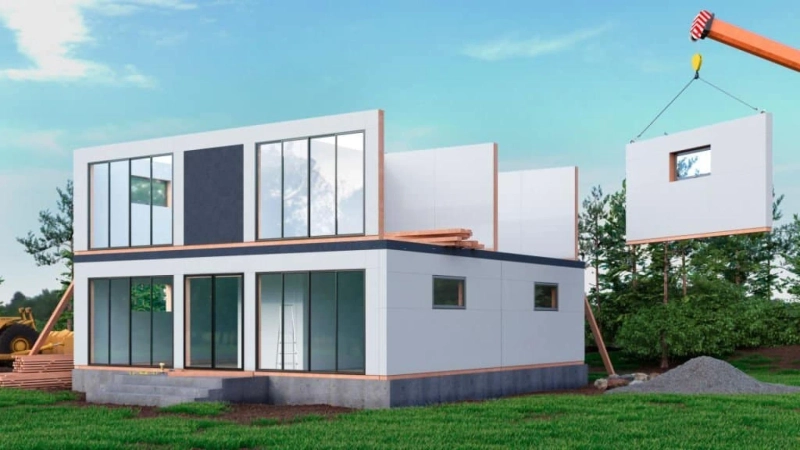Prefab ADUs, or prefabricated accessory dwelling units, have a number of benefits that make them an attractive option for homeowners looking to add additional living space to their property. First, prefab ADUs are built off-site in a controlled environment, which means that they are not subject to the same weather-related delays and issues as traditional on-site construction. This also allows for a more efficient and cost-effective building process, as the prefab ADU can be manufactured and assembled in a shorter timeframe. Additionally, prefab ADUs are often designed to be energy-efficient, which can help to reduce utility costs for homeowners. They can also be customized to meet the specific needs and preferences of the homeowner, making them an ideal solution for families with aging parents or adult children who need their own space. Overall, prefab ADUs are a versatile and cost-effective option for adding additional living space to a property.
Types of Prefab ADUs
- Tiny homes: These are small, compact prefab ADUs that are typically under 400 square feet in size. They are designed for minimal living and are often used as secondary dwellings for guests or as rental units.
- Container homes: These prefab ADUs are made from shipping containers and are a cost-effective and eco-friendly option. They are often used as a low-cost alternative to traditional ADUs.
- Modular homes: These prefab ADUs are built in a factory and then transported to the site for assembly. They are often used as a more permanent and higher-end option for ADUs.
- Park models: These prefab ADUs are designed for use as vacation homes or rental units. They are typically under 400 square feet in size and are often used in RV parks or other vacation communities.
- Studio apartments: These prefab ADU are designed as small, compact living spaces and are often used as rental units or for guests. They typically have a living area, kitchen, and bathroom.
- Granny flats: These prefab ADUs are designed for use as secondary dwellings for older adults or as rental units. They are typically smaller than traditional homes and have features such as grab bars and wheelchair ramps.
Prefab ADU Building Regulations and Permits
Prefab ADU (accessory dwelling unit) building regulations and permits vary by state and municipality. Some states, such as California, have specific regulations and permitting processes in place for prefab ADUs, while others do not.
In general, the building regulations and permitting process for a prefab ADU will involve the following steps:
- Zoning and land use review: The first step in the process is to determine if the property is zoned for an ADU and if there are any land use restrictions. This will involve submitting an application to the local zoning or planning department.
- Building code review: The next step is to ensure that the prefab ADU meets all building codes and safety standards. This will involve submitting building plans and specifications to the local building department for review.
- Utility connections: In some cases, the prefab ADU will need to be connected to utilities such as electricity, water, and sewage. This will involve submitting applications and obtaining permits from the local utility companies.
- Occupancy permit: Once the prefab ADU has been built and all necessary permits have been obtained, an occupancy permit will be required before the unit can be occupied.
It is important to note that the specific regulations and permitting requirements for prefab ADUs can vary greatly depending on the location, so it is important to check with local authorities for specific requirements in your area. So, it is always advisable to consult a local building official or contractor before starting any construction project.
Conclusion
prefab ADU (accessory dwelling units) offer a convenient and cost-effective solution for homeowners looking to add extra living space to their property. These units are typically prefabricated off-site and then transported and assembled on the homeowner\'s property, saving time and money compared to traditional on-site construction. Additionally, prefab ADUs offer a variety of design options and can be customized to meet the specific needs of the homeowner. They are also an environmentally friendly option as they often use sustainable materials and construction techniques. Overall, prefab ADUs are a great option for those looking to add a guest house, rental unit, or additional living space to their property.
0



